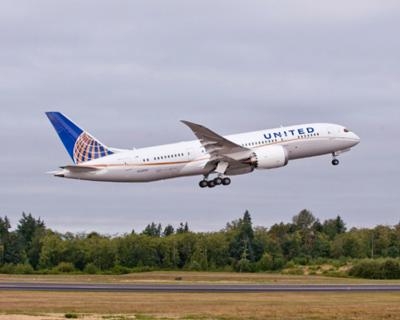On Time Performance Has Also Improved, According To BTS Report
The U.S. Department of Transportation has released its February 2018 Air Travel Consumer Report on air carrier data compiled for the month of December 2017 and calendar year 2017. In 2017, the carriers posted a bumping rate of 0.34 per 10,000 passengers, the lowest annual rate based on historical data dating back to 1995. The previous low was 0.62 in 2016. These carriers posted a bumping rate of 0.18 per 10,000 passengers for the fourth quarter of 2017, an improvement over the 0.55 rate for the fourth quarter of 2016.

Oversales data, unlike other air carrier data, are reported quarterly rather than monthly. See the February Air Travel Consumer Report for denied boarding numbers by airline.
In 2017, the U.S. carriers reporting mishandled baggage data posted a mishandled baggage rate of 2.46 per 1,000 passengers, an improvement over 2016’s rate of 2.70. The carriers posted a mishandled baggage rate of 3.15 reports per 1,000 passengers in December, an improvement over December 2016’s rate of 3.58, but up from November 2017’s rate of 1.83.
The consumer report also includes data on on-time performance, cancellations, tarmac delays, chronically delayed flights, and the causes of flight delays filed with the Department’s Bureau of Transportation Statistics (BTS) by the reporting carriers. In addition, the consumer report contains a record of aviation service complaints filed with DOT’s Aviation Consumer Protection Division by consumers regarding a range of issues including flight problems, baggage, reservation and ticketing, refunds, customer service, disability access, and discrimination. The report also includes information about the total number of animals that died, were injured, or were lost during air transport in December 2017 and calendar year 2017, as filed by the air carriers with the Aviation Consumer Protection Division.
DOT has launched its redesigned airline consumer website to make it easy for travelers to understand their rights. The full consumer report and other aviation consumer matters of interest to the public can be found here.

In December, the reporting carriers posted an on-time arrival rate of 80.3 percent, up from the 75.6 percent on-time rate in December 2016, but down from the 88.3 percent mark in November 2017. For the full year 2017, the reporting carriers posted an on-time arrival rate of 80.2 percent, down from 81.4 percent in 2016.
In December, the reporting carriers canceled 1.2 percent of their scheduled domestic flights, an improvement over the 1.6 percent cancellation rate posted in December 2016, but up from the 0.3 percent rate in November 2017. For the full year 2017, the reporting carriers canceled 1.5 percent of their scheduled domestic flights, up from 1.2 percent in 2016.
In December, airlines reported 96 tarmac delays of more than three hours on domestic flights, compared to no such tarmac delays reported in November 2017. Of the 96 domestic flights with tarmac times of more than three hours, 77 were arriving flights waiting on the Atlanta tarmac during the December 17 power outage. An additional 14 flights were delayed on the tarmac departing Atlanta during a December 8 snowstorm. Four other flights were delayed on the Dallas-Fort Worth tarmac during a December 31 snow and ice storm.
In December, airlines also reported 21 tarmac delays of more than four hours on international flights, compared to no such tarmac delays reported in November 2017. All but two were related to the December 17 power outage at Atlanta. Extended tarmac delays are investigated by the Department.
At the end of December, there were two regularly scheduled flights that were chronically delayed – more than 30 minutes late more than 50 percent of the time – for two consecutive months. There were no chronically delayed flights for three consecutive months or more. A list of flights that were chronically delayed for one or more months is available from BTS.
In December 2017, the carriers filing on-time performance data reported that 19.73 percent of their flights were delayed – 5.58 percent of their flights were delayed by aviation system delays, compared to 3.60 percent in November; 6.72 percent by late-arriving aircraft, compared to 3.89 percent in November; 5.46 percent by factors within the airline’s control, such as maintenance or crew problems, compared to 3.61 percent in November; 0.56 percent by extreme weather, compared to 0.16 percent in November; and 0.05 percent for security reasons, compared to 0.04 percent in November. In addition, 1.15 percent of flights were canceled and 0.21 percent were diverted.
Weather is a factor in both the extreme-weather category and the aviation-system category. This includes delays due to the re-routing of flights by DOT’s Federal Aviation Administration in consultation with the carriers involved. Weather is also a factor in delays attributed to late-arriving aircraft, although airlines do not report specific causes in that category.
BTS uses the data collected from airlines to determine the percentage of late flights delayed by weather, which includes those reported in the categories of extreme weather, late-arriving aircraft, and National Aviation System delays. In December, 29.26 percent of late flights were delayed by weather, up from 28.36 percent in December 2016 and from 27.84 percent in November 2017.
(Source: DOT news release. Image from file)
 ANN's Daily Aero-Term (12.19.25): Ultrahigh Frequency (UHF)
ANN's Daily Aero-Term (12.19.25): Ultrahigh Frequency (UHF) NTSB Prelim: Cirrus Design Corp SR22T
NTSB Prelim: Cirrus Design Corp SR22T Classic Aero-TV: The Red Tail Project--Carrying the Torch of the Tuskegee Airmen
Classic Aero-TV: The Red Tail Project--Carrying the Torch of the Tuskegee Airmen Aero-News: Quote of the Day (12.19.25)
Aero-News: Quote of the Day (12.19.25) Airborne 12.17.25: Skydiver Hooks Tail, Cooper Rotax Mount, NTSB v NDAA
Airborne 12.17.25: Skydiver Hooks Tail, Cooper Rotax Mount, NTSB v NDAA




